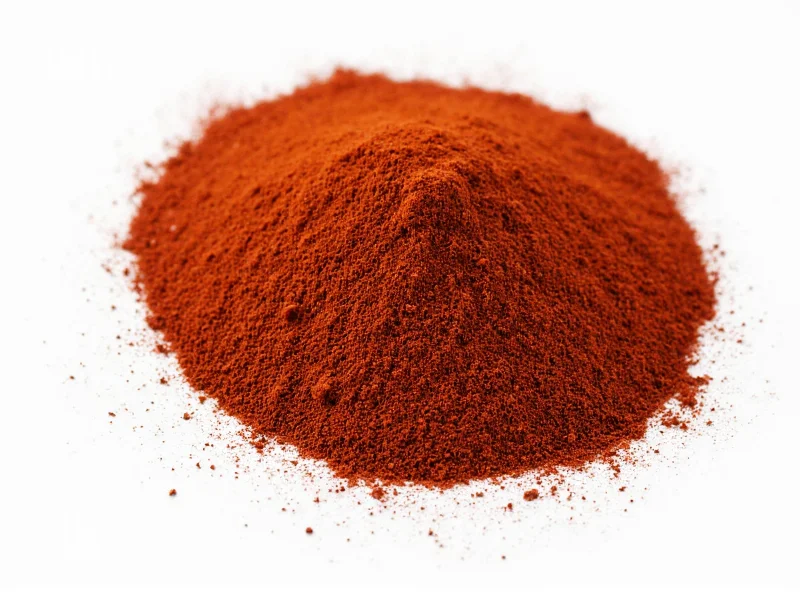Sumac, with its vibrant red color and tangy lemon-cranberry flavor profile, is a staple in Middle Eastern, Mediterranean, and Levantine cuisines. When you need a sumac substitute spice for your recipe, understanding what makes sumac unique helps you select the most appropriate replacement. Sumac's primary characteristic is its pleasant tartness without excessive acidity, making it valuable for seasoning meats, salads, rice dishes, and dips like hummus.
Understanding Sumac's Flavor Profile
Before exploring sumac substitute spice options, it's essential to understand what you're trying to replicate. Sumac delivers:
- A bright, citrus-like tartness (but less acidic than lemon)
- Subtle earthy, floral notes
- A deep red-purple color that enhances visual appeal
- Moderate astringency that balances rich flavors
When searching for what can I use instead of sumac in recipes, consider which of these elements matters most for your specific dish. A fattoush salad requires the visual color and moderate tartness, while a dry rub might prioritize flavor over appearance.
Top Sumac Substitute Options
Lemon Juice with Paprika
This combination works exceptionally well as a sumac replacement for middle eastern cooking. The lemon provides the necessary tartness while paprika contributes both color and earthiness.
Usage ratio: For every 1 teaspoon of sumac, use ½ teaspoon lemon juice plus ½ teaspoon paprika. For dry applications, use 1 teaspoon lemon zest plus ½ teaspoon paprika.
This substitute works particularly well in marinades, dressings, and when sprinkled over finished dishes. It's the most accessible option since most kitchens have these ingredients on hand.
Za'atar Spice Blend
Za'atar contains sumac as one of its primary ingredients (typically 30-50%), making it an excellent alternative when you need a dry sumac substitute spice. Traditional za'atar includes thyme, oregano, sesame seeds, and sumac.
Usage ratio: Substitute 1:1 for sumac in dry rubs and sprinkling applications. For dressings, use slightly less as za'atar contains additional ingredients.
This works best when you want to maintain the Middle Eastern flavor profile. Note that za'atar has more herbal notes than pure sumac, which may alter your dish's flavor profile slightly.
Amchoor (Mango Powder)
Popular in Indian cuisine, amchoor provides a similar tartness to sumac with a slightly different flavor profile. This sumac alternative with similar tart flavor works particularly well in vegetarian dishes and lentil recipes.
Usage ratio: Use ¾ teaspoon amchoor for every 1 teaspoon of sumac required.
Amchoor lacks sumac's red color but delivers comparable acidity. It's an excellent choice when making dishes where appearance isn't critical but tartness is essential.
Vinegar-Based Alternatives
When you need a quick sumac replacement for middle eastern cooking, various vinegars can provide the necessary acidity:
- Apple cider vinegar: Milder than white vinegar, with subtle fruit notes
- White wine vinegar: Clean acidity that won't alter color
- Rice vinegar: Gentle acidity with slight sweetness
Usage ratio: For every 1 teaspoon of sumac, use ¼-½ teaspoon vinegar diluted in 1 teaspoon water to prevent overpowering your dish.
Sumac Substitute Comparison
| Substitute | Flavor Profile | Best Applications | Ratio (vs Sumac) | Color Match |
|---|---|---|---|---|
| Lemon juice + paprika | Tart, citrusy, slightly earthy | Dressings, marinades, finishing spice | ½ tsp lemon + ½ tsp paprika | ★★★★☆ |
| Za'atar | Herbal, tangy, nutty | Dry rubs, sprinkled on finished dishes | 1:1 | ★★★☆☆ |
| Amchoor (mango powder) | Tart, slightly fruity | Vegetarian dishes, lentils, stews | ¾:1 | ★☆☆☆☆ |
| Vinegar + water | Sharp acidity | Dressings, sauces, braises | ¼-½ tsp + 1 tsp water | ★☆☆☆☆ |
| Tajin | Tangy, chili-lime | Mexican-inspired dishes, fruit | ⅔:1 | ★★★☆☆ |
How to Choose the Right Sumac Substitute
Selecting the best sumac alternative with similar tart flavor depends on several factors:
Consider Your Recipe Type
Middle Eastern dishes (fattoush salad, muhammara): Lemon-paprika blend works best for how to substitute sumac in fattoush salad. The color and balanced tartness closely mimic authentic results.
Dry rubs for meats: Za'atar provides the best texture and adheres well to proteins while delivering complementary flavors.
Indian or South Asian recipes: Amchoor integrates seamlessly without introducing foreign flavor elements.
Account for Color Requirements
If visual presentation matters (like in fattoush salad where sumac gives the dressing its characteristic pink hue), prioritize substitutes that maintain color. Lemon-paprika or Tajin work best for this purpose. For dishes where color doesn't matter, focus solely on flavor matching.
Avoid Common Substitution Mistakes
Many home cooks make these errors when seeking what can I use instead of sumac in recipes:
- Using straight lemon juice: This creates excessive acidity without sumac's earthy notes
- Overcompensating with vinegar: Results in harsh, one-dimensional tartness
- Ignoring regional compatibility: Using Tajin in Middle Eastern dishes creates flavor confusion
- Not adjusting quantities: Sumac is milder than pure citrus, so direct 1:1 substitutions often fail
Specialized Substitution Scenarios
For Fattoush Salad
When you need how to substitute sumac in fattoush salad specifically, the lemon-paprika combination works best. The paprika provides the necessary color while lemon delivers the tartness. Add ½ teaspoon of toasted sesame seeds to enhance the nuttiness that sumac normally contributes.
For Dry Rub Applications
For meats and vegetables requiring a dry spice rub, za'atar makes the most effective sumac substitute spice. The herbal components complement the tartness and create a more complex flavor profile than single-ingredient alternatives.
For Vegan Dishes Needing Color
When color matters in vegan preparations, consider beet powder mixed with lemon zest. While not a perfect flavor match, this combination preserves the visual element that sumac provides to many Middle Eastern dishes.











 浙公网安备
33010002000092号
浙公网安备
33010002000092号 浙B2-20120091-4
浙B2-20120091-4